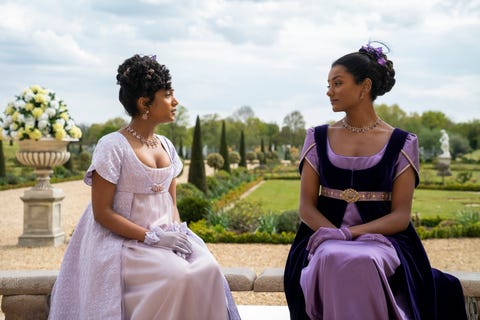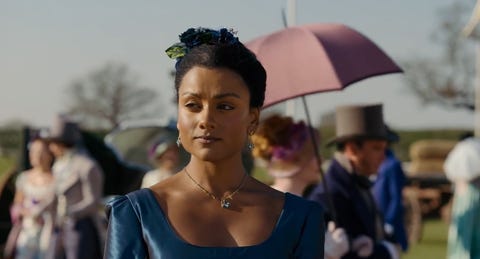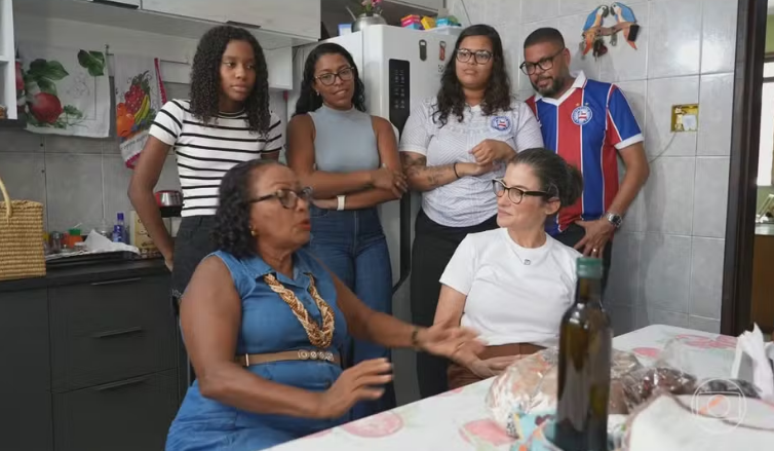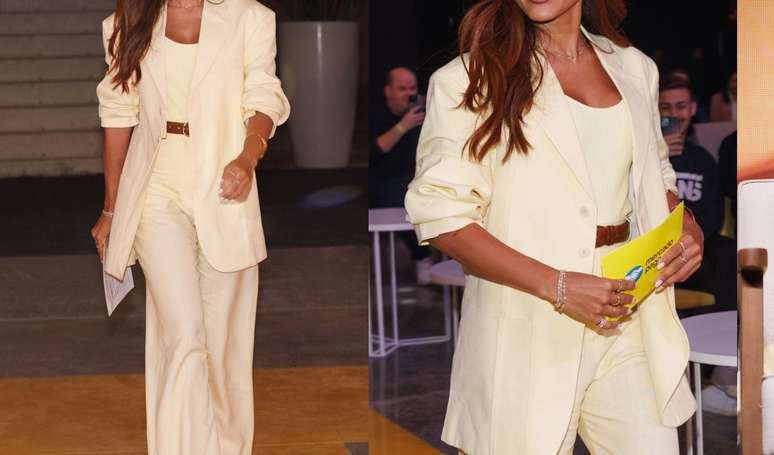The arrival of the Sharmas brings more diversity to the series, but loses some precision in its portrayal of Indian culture.
The new season of ‘The Bridgertons’ premiered over the weekend and, unsurprisingly, Indians all over the world were excited. Rightly so, as we have one of the best portrayals of them in Western media, and in a Regency-era romantic drama at that.
The new season does a lot of things right when it comes to South Asian portrayal, but it also has some iffy cultural moments, which have raised some eyebrows among Indians.
We are introduced to the beautiful Miss Kate (Simone Ashley) and Edwina Sharma (Charithra Chandran), who are the perfect cast. It’s heartening to see not one, but two dark-skinned Tamil female leads in a major Netflix production, when even Indian cinema still prefers its lighter-skinned female leads.
However, what trips her up in the first place are the Sharma sisters. Seeing the darker skinned female leads, you would expect them to be South Indian, so the surnames cause a bit of confusion as Sharma is more common among North Indians.
This is an opportunity to accurately represent South Indian women, which the casting gets right, but the North Indian surname makes it confusing. We could put it down to a lazy decision, as it is one of the most common surnames in Bollywood movies, and even in the Indian diaspora, due to caste and class privileges.
But just when we almost forgive this detail, the sisters refer to their father as ‘Appa’, which is Tamil, a distinctly South Indian language. At the same time, Edwina addresses her sister as ‘Didi’, which is Hindi for elder sister, and the confusion reaches its peak.
We’re told the sisters lived in Bombay prior to their arrival in London, which might explain why they’re multilingual, but Edwina calling Kate ‘Didi’ makes one wonder if the creators thought to put in any Indian references just because they didn’t care. for the nuances.

Multilingualism is not uncommon in Indian households as Indian children easily speak more than two languages when their parents are from different parts of India. But what is also very Indian is the curiosity to wonder where Kate and Edwina’s father was really from in this case.
Kate tells Anthony Bridgerton (Jonathan Bailey) on their hunting day that her father was a secretary to a royal family in India; So he was a Tamil who moved to Mumbai? Unfortunately, we don’t know much more about the mysterious Mr. Sharma other than the wise advice his daughters repeat to each other.
The theme of language comes up in the series and the writers can hardly be blamed, with the sheer number of languages spoken in India. Kate praises her sister’s linguistic talents, telling Lady Danbury (Adjoa Andoh) that Edwina is fluent in French, Latin, Greek, Marathi, and Hindustani, but does not mention Tamil, so there is still confusion as to where the girls started. to call his father “Appa”.
Also, as many Indians pointed out, Hindustani was not a separate language, but a mix of Hindi and Urdu that is commonly spoken in North India.

Kate also praises her sister’s musical talents by playing the “sitar, maruli and pianoforte”. This is probably a typo in the subtitles, but there is no such instrument as “maruli”. Kate could be referring to the murali or the flute.
Mistakes in the series can be attributed to the writers trying too hard to “represent” all Indians. What else can explain why in one of the episodes, Edwina Sharma asks Anthony Bridgerton (Jonathan Bailey) if she has read ‘Ghalib’, which he embarrassingly pronounces ‘Guhleeb’, betraying a historical inaccuracy detected by Indian viewers at flight.
Mirza Ghalib (pronounced GAH-luhb) was a famous Indian poet, but his work was only published after 1841, much later than the Regency era in which the series is set.
Despite the flaws, the small details of the series deserve praise, such as Kate declaring that she ‘despises English tea’ and then we see her making her own ‘chai’ by adding cardamom and cloves from her silken spice bag.

We also have other important performance moments with the fun pre-wedding ‘haldi’ ceremony, where family members apply turmeric paste to the bride. The icing on the cake is the classic rendition of Kabhi Khushi Kabhi Gham, a Bollywood hit, parts of which were incidentally filmed in London, playing in the background.
Kate oiling Edwina’s hair is another tender moment that reminds any Indian of home and their elders oiling their hair. Even the suits with embroidered silk in vibrant hues and gold jewelery are welcome nods to South Asian culture.
On Edwina’s wedding day, Kate gives her bracelets that belonged to her mother or ‘Amma’ as she calls her. Finally, the ancestry starts to make sense: we could assume that Kate’s mother was a Tamilian who married Mr. Sharma. This could also explain why Kate calls her stepmother Lady Mary ‘Mama’ and both sisters call her father ‘Appa’.
The presentation of gold bangles adheres to the Indian tradition of passing down wedding jewelry from mother to daughter. The character names do them justice, too, as we find out that Kate’s real name is Kathani Sharma, when Anthony proposes to her in the final episode. Edwina’s name also has an Indian connection, as she was the name of the wife of Lord Mountbatten, the last Viceroy of India. (Countess Edwina’s affair with India’s first Prime Minister, Jawaharlal Nehru, was scandalous and widely documented, worthy of the Lady Whistledown papers.)

The series also perfectly captures the burden of eldest daughters in Indian families, who often bear great responsibility to uphold family honor. We also see that the Sharmas frequently switch between their English and Indian accents when speaking to each other, something familiar to many Indian immigrants and diaspora children.

The Bridgertons have a way of creating a utopian fantasy where a character’s ethnicity doesn’t drive the plot. We loved that Kate Sharma was the bane of Anthony Bridgerton’s existence as much as Daphne (Phoebe Dynevor) and the Duke (Rege-Jean Page) were on fire for each other. Clearly, a lot of thought has gone into the depiction of Indian culture in the series and, aside from a few slip-ups, it has been a success.
While most of India’s portrayal in Western media tends to be of North Indian characters, the trend has been slowly changing, with shows like ‘Never Have I Ever’ and ‘The Bridgertons’ finally showing us full-fledged Tamil women. and to their families.
Seasons 1 and 2 of ‘The Bridgertons’ are now available on Netflix.
Source: Fotogramas
Camila Luna is a writer at Gossipify, where she covers the latest movies and television series. With a passion for all things entertainment, Camila brings her unique perspective to her writing and offers readers an inside look at the industry. Camila is a graduate from the University of California, Los Angeles (UCLA) with a degree in English and is also a avid movie watcher.


![Such a wonderful sun in advance: Summary of Wednesday Episode, April 23, 2025 [SPOILERS] Such a wonderful sun in advance: Summary of Wednesday Episode, April 23, 2025 [SPOILERS]](https://fr.web.img2.acsta.net/img/6f/93/6f938c87da316febef85a99015323e98.png)



